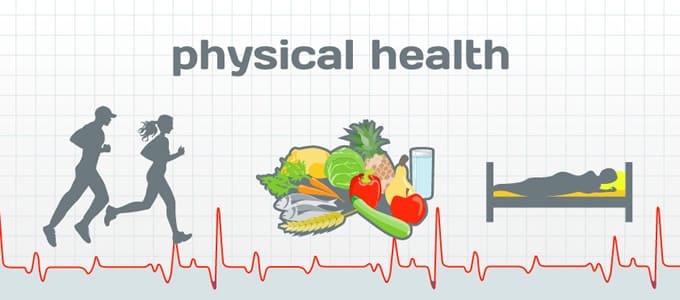
The body needs six kinds of nutrients: carbohydrates, proteins, fats, vitamins, minerals, and water. Carbohydrates, proteins, and fats give you energy, while vitamins, minerals, and water keep the body machinery humming to deliver that energy. They support the enzymes and hormones that carry out the chemical reactions that make everything happen.
Carbohydrates, proteins, and fats are the "crude oil" from which the body′s gasolines–glucose and fatty acids–are refined. Glucose is a special form of sugar that comes from carbohydrates and proteins. Fatty acids come from proteins and fat.
In simple terms, about 60 percent of daily calories should come from carbohydrates, 15–20 percent from proteins, and the rest (20–25 percent) from fat. Below are suggested practical ways of achieving this balance.
Exercise and Fuel
The two forms of exercise–aerobic and anaerobic–use the body′s fuels in vastly different ways.
Aerobic exercise
Aerobic is an adjective used to describe something that needs oxygen to exist. When used to describe a kind of exercise, it indicates that the exercise conditions the heart and lungs, making oxygen intake ever more efficient. The muscles use oxygen slowly enough to allow the blood to continually replenish the supply. Breathing is hard, but hasn′t advanced to gasping. (If a person can′t talk during the exercise, it′s not aerobic.) Aerobic exercise burns fat and some sugar.
Pure sugar does two things: (a) it gives an immediate but short energy boost, and (b) it increases the insulin level. Insulin is the enzyme that the body uses to burn sugar for energy. The extra insulin created by aerobic exercise burns up all the sugar and then looks around for more, making you feel hungrier than ever. Even worse, the increased insulin blocks the enzymes that make fat available as fuel, so the fat campfire starts to go out!Depressing, isn′t it?
Anaerobic exercise
Anaerobic is an adjective used to describe something existing in the absence of free air or oxygen. In anaerobic exercise, the muscles have essentially used up all the free oxygen and the blood cannot deliver enough in time. Without oxygen, the muscles can′t burn fat; they are forced to find some other fuel. The alternative the muscles select is glycogen, a stored form of sugar. Some glycogen is warehoused in the muscles themselves, making it an easily accessed energy supplement.
Other glycogen resides in the liver; however, for it to get to the muscles, blood must carry it there. In anaerobic exercise, the muscle is already working so hard that the blood supply is not adequate; therefore, liver glycogen is not a viable long-term solution for anaerobic energy needs. In desperation, the body burns muscle to meet its energy needs, which is not a great solution if the aim is to build more.
The President′s Council on Physical Fitness and Sports has identified running; bicycling; basketball, handball, or squash (they are rated equally); and skating or cross-country skiing as the best sports for assisting in weight control. In the table are listed activities and the estimated calories they demand per minute.
This is a section from Dr. Jack E, Jensen’s book The One Stop Knee Shop. Read the next section Components of a Complete Diet.


